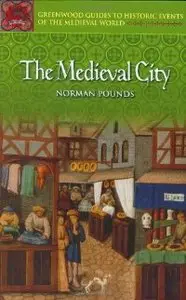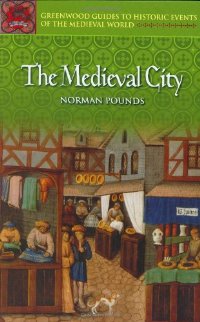Norman Pounds, "The Medieval City (Greenwood Guides to Historic Events of the Medieval World)"
Publisher: Greenwood | ISBN 10: 0313324980 | 2005 | PDF | 264 pages | 10.3 MB
Publisher: Greenwood | ISBN 10: 0313324980 | 2005 | PDF | 264 pages | 10.3 MB
An introduction to the life of towns and cities in the medieval period, this book shows how medieval towns grew to become important centers of trade and liberty. Beginning with a look at the Roman Empire's urban legacy, the author delves into urban planning or lack thereof; the urban way of life; the church in the city; city government; urban crafts and urban trade, health, wealth, and welfare; and the city in history. Annotated primary documents like Domesday Book, sketches of street life, and descriptions of fairs and markets bring the period to life, and extended biographical sketches of towns, regions, and city-dwellers provide readers with valuable detail. In addition, 26 maps and illustrations, an annotated bibliography, glossary, and index round out the work.After a long decline in urban life following the fall of the Roman Empire, towns became centers of trade and of liberty during the medieval period. Here, the author describes how, as Europe stabilized after centuries of strife, commerce and the commercial class grew, and urban areas became an important source of revenue into royal coffers. Towns enjoyed various levels of autonomy, and always provided goods and services unavailable in rural areas. Hazards abounded in towns, though. Disease, fire, crime and other hazards raised mortality rates in urban environs.Designed as an introduction to life of towns and cities in the medieval period, eminent historian Norman Pounds brings to life the many pleasures, rewards, and dangers city-dwellers sought and avoided. Beginning with a look at the Roman Empire's urban legacy, Pounds delves into Urban Planning or lack thereof; The Urban Way of Life; The Church in the City; City Government; Urban Crafts and Urban Trade, Health, Wealth, and Welfare; and The City in History. Annotated primary documents like Domesday Book, sketches of street life, and descriptions of fairs and markets bring the period to life, and extended biographical sketches of towns, regions, and city-dwellers provide readers with valuable detail. In addition, 26 maps and illustrations, an annotated bibliography, glossary, and index round out the work.



